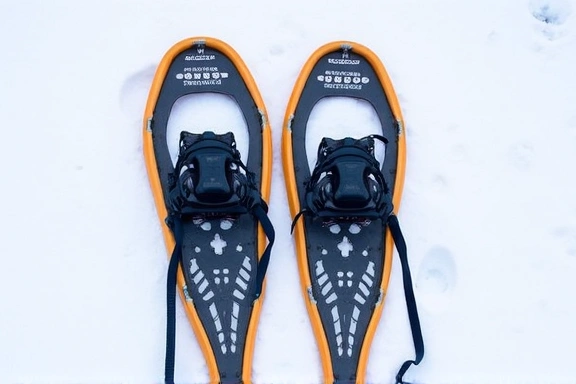Embrace the Winter Wilderness: Hiking & Snowshoeing Adventures
Step into a world transformed by snow and ice, where familiar trails take on a breathtaking new character. Winter hiking and snowshoeing offer a unique opportunity to connect with nature in its most serene and pristine state. Far from the bustling crowds of summer, the winter landscape offers unparalleled tranquility, crisp air, and stunning vistas. Whether you prefer the crunch of snow underfoot on a well-trodden path or the silent glide of snowshoes across fresh powder, these activities provide invigorating exercise and unforgettable memories. Discover hidden frozen waterfalls, track wildlife in their natural habitat, and experience the profound beauty of a snow-covered forest. It's an adventure that awakens the senses and rejuvenates the spirit, proving that winter is not just a season to endure, but a season to explore.
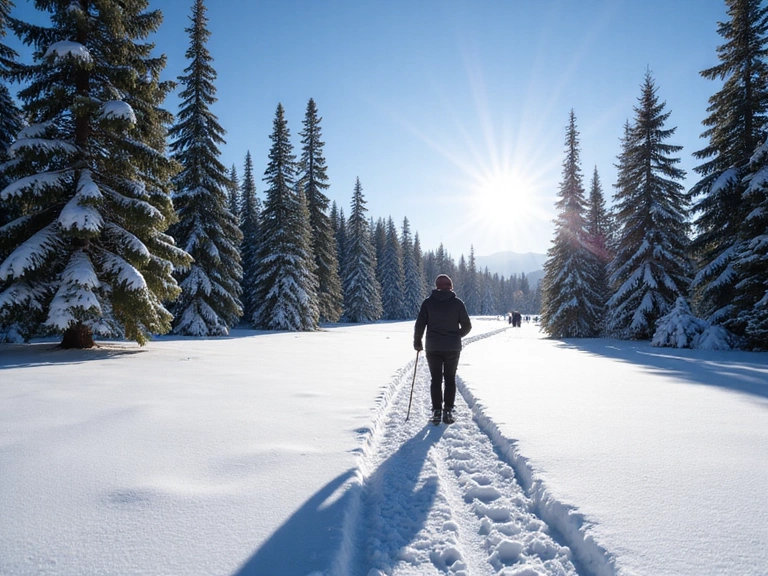
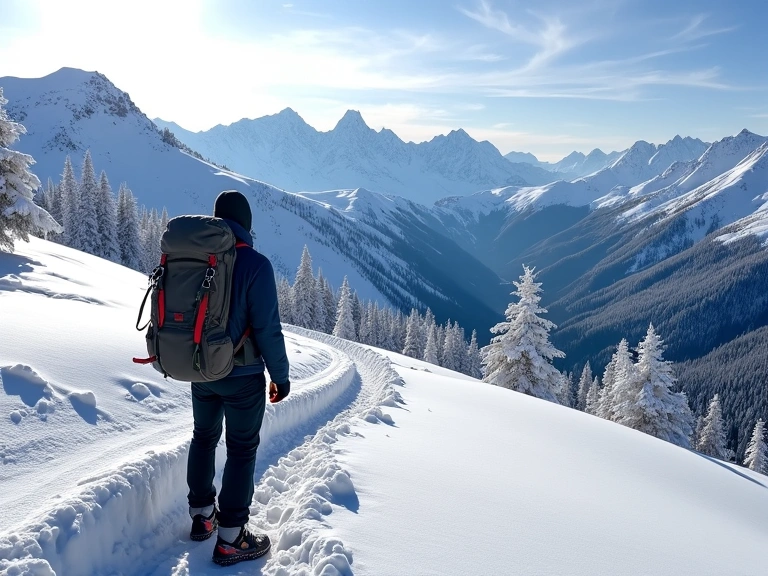
Discover Iconic Winter Trails Across America
America's national parks and wilderness areas transform into magical winter playgrounds, offering trails that cater to all skill levels. Before embarking on any winter adventure, always check current trail conditions, weather forecasts, and avalanche advisories. Remember, conditions can change rapidly in winter environments.
-
Rocky Mountain National Park, Colorado
Known for its dramatic peaks and diverse ecosystems, Rocky Mountain National Park offers incredible winter hiking and snowshoeing opportunities. Popular trails include the Bear Lake Road corridor, providing access to shorter, relatively flat trails like Bear Lake, Alberta Falls, and Emerald Lake. These trails range from easy to moderate, with lengths from 1 to 3 miles round trip. For more experienced snowshoers, the challenging trek to Sky Pond offers stunning views of frozen waterfalls and alpine lakes, covering about 9 miles round trip with significant elevation gain. The park's winter beauty, with snow-laden pines and frozen landscapes, is truly unparalleled.
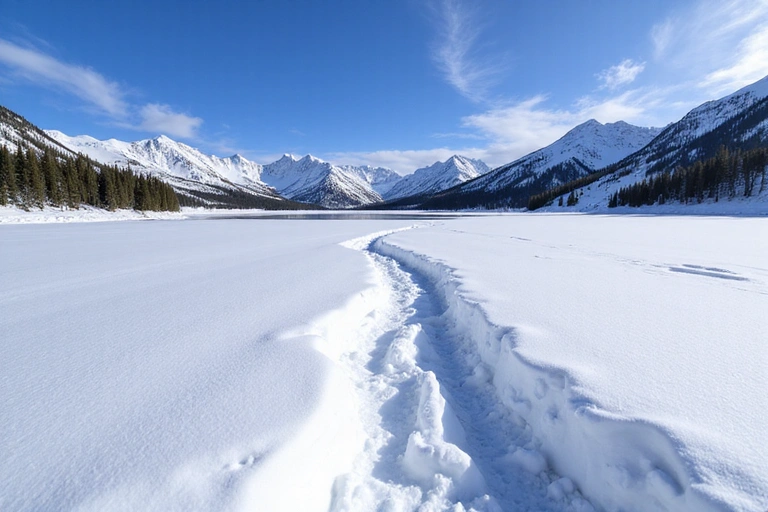
-
Yellowstone National Park, Wyoming (and surrounding states)
While much of Yellowstone is inaccessible by car in winter, its interior becomes a snowshoeing and cross-country skiing paradise. Trails around Mammoth Hot Springs, the Upper Geyser Basin (Old Faithful area), and Canyon Village offer unique perspectives on the park's geothermal features amidst a snowy backdrop. Many trails are relatively flat and easy, ranging from 1 to 5 miles, allowing visitors to witness steaming geysers and hot springs surrounded by snow and ice. Wildlife viewing, especially bison and elk, is often a highlight. Access to the interior typically requires a snowcoach or snowmobile tour, adding to the adventure.
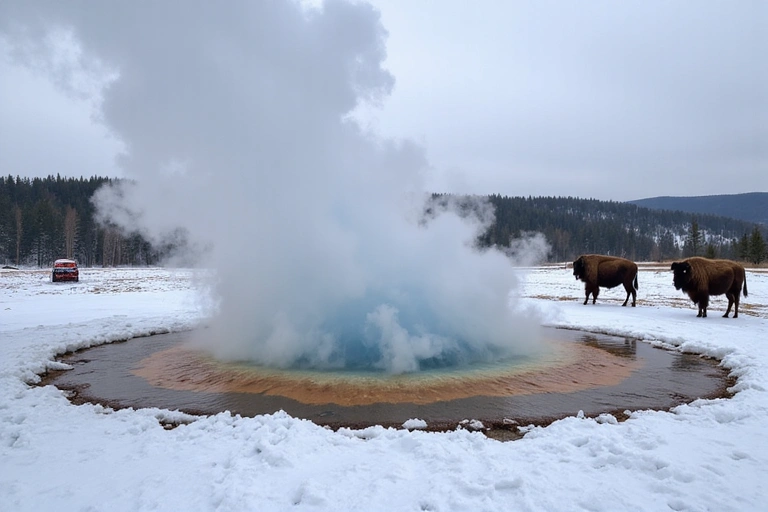
-
Adirondack Park, New York
The vast wilderness of the Adirondacks offers an extensive network of trails for winter exploration. From gentle forest walks to challenging ascents of the High Peaks, there's something for every level. Popular snowshoeing destinations include the trails around Lake Placid, such as the Peninsula Trails, which offer scenic views of Mirror Lake and Lake Placid, with distances varying from 1 to 3 miles. For those seeking a more strenuous adventure, many of the 46 High Peaks are accessible in winter, though they require significant preparation, experience, and specialized gear. The reward is unparalleled solitude and panoramic views of a snow-covered mountain range.
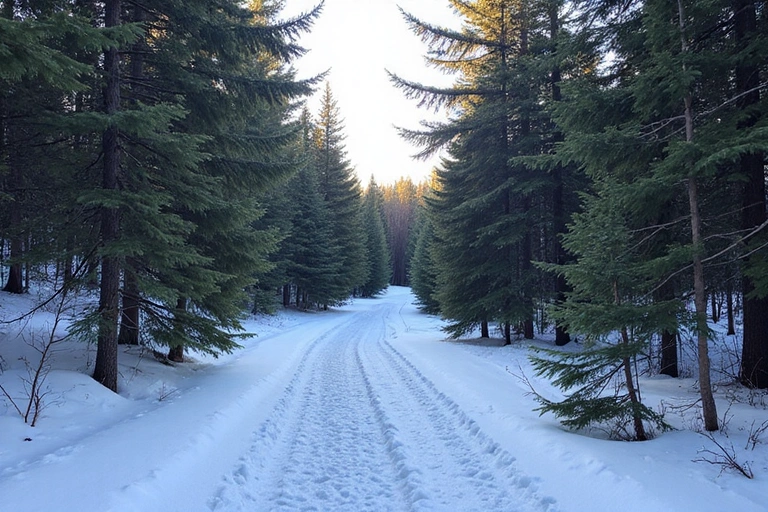
Prioritize Safety: Essential Winter Hiking Precautions
Winter conditions can be unforgiving, and safety must always be your top priority. Proper preparation and awareness of potential hazards are crucial for an enjoyable and safe winter hiking or snowshoeing experience. Never underestimate the cold, the snow, or the unpredictable nature of mountainous terrain.
- Layering Clothing: Dress in multiple layers to regulate your body temperature effectively. Start with a moisture-wicking base layer, add insulating mid-layers (fleece, down), and finish with a waterproof and windproof outer shell. Avoid cotton, as it retains moisture and can lead to hypothermia.
- Stay Hydrated and Fueled: Even in cold weather, dehydration is a risk. Carry insulated water bottles (Nalgene works well) to prevent water from freezing. Bring high-energy snacks like nuts, dried fruit, and energy bars to maintain your energy levels.
- Navigation Tools: Always carry a map, compass, and a fully charged GPS device or smartphone with downloaded offline maps. Know how to use them. Winter trails can be obscured by snow, making navigation challenging.
- Notify Others: Inform someone of your itinerary, including your planned route, estimated return time, and who is in your group. Stick to your plan.
- Hypothermia and Frostbite Awareness: Recognize the signs of hypothermia (shivering, confusion, clumsiness) and frostbite (numbness, pale skin, waxy appearance). Take immediate action if you suspect either.
- Avalanche Awareness: If you are venturing into avalanche terrain, check local avalanche forecasts (e.g., National Avalanche Center). Consider taking an avalanche safety course and carry appropriate gear (beacon, shovel, probe).
- Proper Footwear and Traction: Wear waterproof, insulated hiking boots. For icy conditions, microspikes or full crampons are essential. Snowshoes are necessary for deep snow to prevent post-holing and conserve energy.
- Sun Protection: Snow reflects sunlight, increasing your exposure to UV rays. Wear sunglasses or goggles that offer UV protection, and apply sunscreen to exposed skin.
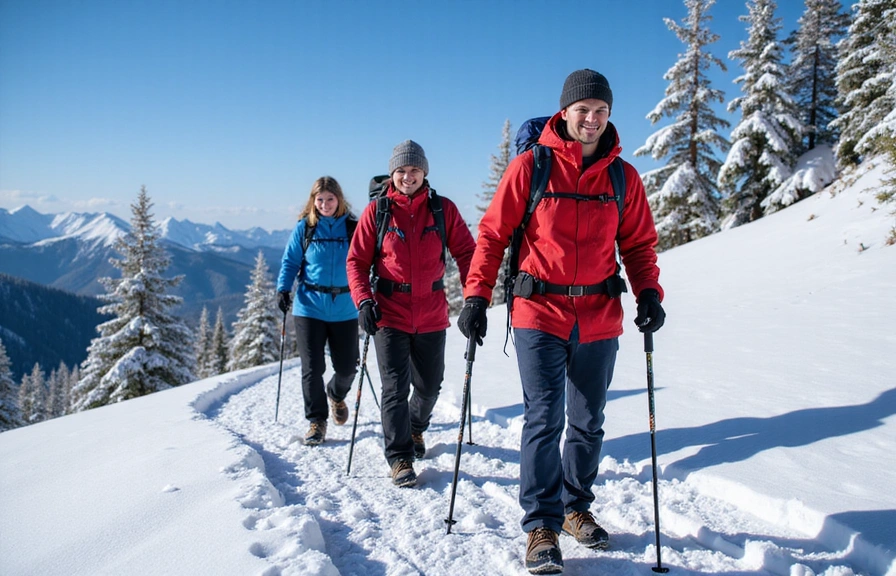
Your Comprehensive Winter Gear Checklist
Having the right gear can make all the difference between a miserable outing and a memorable adventure. This checklist covers the essentials for a safe and comfortable winter hiking or snowshoeing experience.
- Footwear:
- Waterproof, insulated hiking boots
- Wool or synthetic socks (multiple pairs)
- Gaiters (to keep snow out of boots)
- Microspikes or crampons (for icy conditions)
- Snow Travel:
- Snowshoes (appropriate for your weight and snow conditions)
- Trekking poles with snow baskets
- Clothing - Layering System:
- Base Layer (moisture-wicking, synthetic or wool)
- Mid-Layers (insulating fleece or puffy jacket)
- Outer Layer (waterproof, windproof jacket and pants)
- Extra insulating layer (e.g., lightweight down jacket for breaks)
- Hat or Balaclava
- Gloves or Mittens (waterproof, insulated, and an extra pair)
- Essentials & Safety:
- Backpack (appropriate size for gear)
- Insulated water bottles or hydration reservoir (with insulated tube)
- High-energy snacks
- Headlamp or flashlight with extra batteries
- First-aid kit
- Map, compass, and GPS device (or fully charged phone with offline maps)
- Fire starter and emergency shelter (e.g., Mylar blanket)
- Multi-tool or knife
- Whistle
- Sunscreen and lip balm with SPF
- Sunglasses or goggles
- Avalanche safety gear (beacon, shovel, probe) if in avalanche terrain
- Optional Comfort Items:
- Small thermos with hot beverage
- Hand warmers/foot warmers
- Camera
- Binoculars
